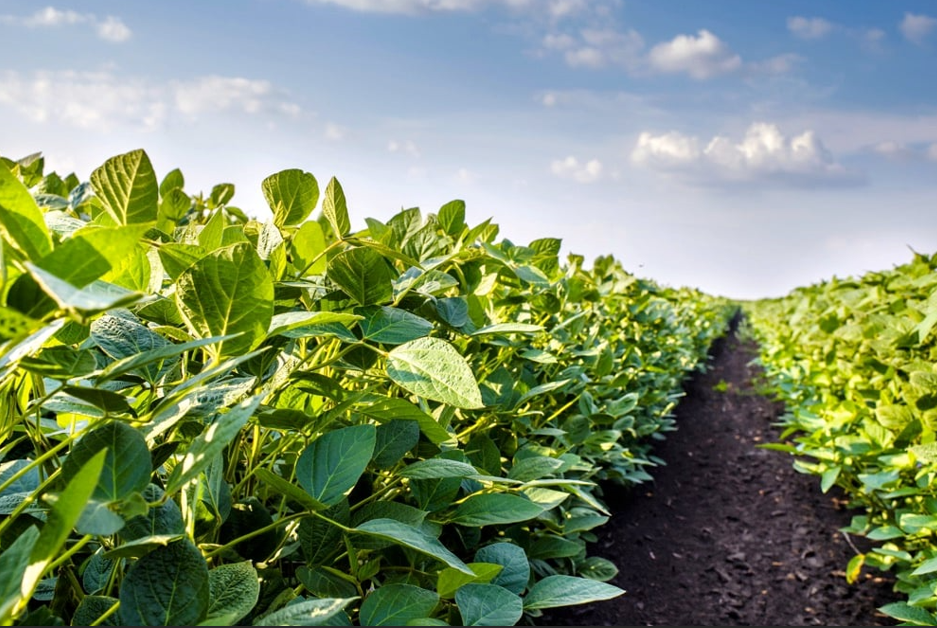Soybeans (Glycine max) are one of the most versatile and widely cultivated legumes in the world. Known for their rich nutritional profile, soybeans have been an integral part of diets for centuries, particularly in Asia. In recent years, they have gained global prominence due to their health benefits and use in various food products and industrial applications.
What is Soybean?
Soybean is a leguminous plant that produces small, round seeds, usually pale yellow in color, although some varieties may be green, black, or brown. It is a rich source of high-quality protein, making it an excellent food option for vegetarians and vegans. Soybeans are also rich in essential fatty acids, fiber, vitamins, and minerals, such as iron, calcium, and potassium. They are commonly processed into various food products like tofu, soy milk, tempeh, and edamame, as well as non-food products like biodiesel, animal feed, and industrial lubricants.
Where Does Soybean Come From?
Soybeans are native to East Asia, specifically China, where they have been cultivated for over 5,000 years. In ancient times, soybeans were primarily used in traditional Chinese medicine and as a staple food crop. Over time, soybeans spread to other parts of Asia, including Japan and Korea, where they became integral to the local cuisines.
The soybean plant thrives in temperate climates with moderate rainfall, which has contributed to its expansion across diverse regions of the world.
In Which Countries in the World Are Soybeans Grown?
Soybeans are now cultivated in many parts of the world, but the largest producers are located in the Americas, Asia, and parts of Europe. The crop is highly adaptable, thriving in a variety of climates from tropical to temperate regions.
Notable soybean-producing countries include:
- United States – A major global exporter of soybeans, particularly from the Midwest (Midwestern states such as Illinois, Iowa, and Indiana).
- Brazil – Another leading producer and exporter of soybeans, especially from the states of Mato Grosso, Paraná, and Rio Grande do Sul.
- Argentina – Known for its significant soybean production, primarily in the central and northeastern parts of the country.
- China – While a significant producer, China also imports large quantities of soybeans due to its vast demand for both human consumption and animal feed.
- India – Soybean cultivation is growing in regions like Madhya Pradesh, Maharashtra, and Rajasthan.
- Paraguay – A smaller producer but still a notable contributor to the global soybean market.
In Which Country Are Soybeans Grown the Most?
The United States is the largest producer of soybeans, accounting for nearly 35-40% of the global production. The vast agricultural lands of the Midwest, also known as the “Corn Belt,” provide ideal growing conditions for soybeans. The U.S. not only leads in domestic production but is also a major exporter, with countries like China and the European Union being key importers.
Following the U.S., Brazil has rapidly expanded its soybean production in recent decades and is now the second-largest producer globally. The competition between these two countries for dominance in the global soybean market has influenced international trade patterns.
What Are the Health Benefits of Soybeans?
Soybeans are packed with numerous health benefits, thanks to their impressive nutritional content. Here are some of the key advantages:
Rich in Protein: Soybeans are one of the few plant-based sources of complete protein, meaning they contain all nine essential amino acids. This makes soy an excellent protein source for vegetarians and vegans.
Heart Health: Soybeans are low in saturated fats and high in polyunsaturated fats, including omega-3 fatty acids. Consuming soy protein can help lower LDL (bad) cholesterol levels, reducing the risk of heart disease.
Bone Health: Soybeans are rich in calcium, magnesium, and isoflavones—compounds that may help prevent bone loss and support bone health, especially in postmenopausal women.
Weight Management: Due to their high fiber content, soybeans contribute to a feeling of fullness, helping with appetite control and potentially supporting weight loss efforts.
Cancer Prevention: Some studies suggest that the isoflavones in soybeans, particularly genistein, may have antioxidant and anti-cancer properties, potentially reducing the risk of breast and prostate cancers.
Menopausal Symptoms: The phytoestrogens in soy, which mimic estrogen in the body, have been found to alleviate some symptoms of menopause, such as hot flashes and mood swings.
Digestive Health: Soybeans are rich in dietary fiber, which promotes digestive health by improving bowel regularity and supporting gut microbiota.
Conclusion
Soybeans have earned their place as one of the most important crops in the world due to their nutritional value, adaptability, and diverse uses. As the global population continues to grow, soybeans provide a sustainable source of protein and other nutrients. With their increasing role in both human and animal nutrition, as well as industrial applications, soybeans are poised to remain an essential commodity in the global economy.
Sources:
- United States Department of Agriculture (USDA). (2024). "Soybeans and Oil Crops."
- Food and Agriculture Organization of the United Nations (FAO). (2024). "Soybean Production Statistics."
- Mayo Clinic. (2022). "Soy and Your Health."
- National Institutes of Health (NIH). (2024). "Health Benefits of Soy."
- Soyfoods Association of North America (SANA). (2023). "Health Benefits of Soybeans."








